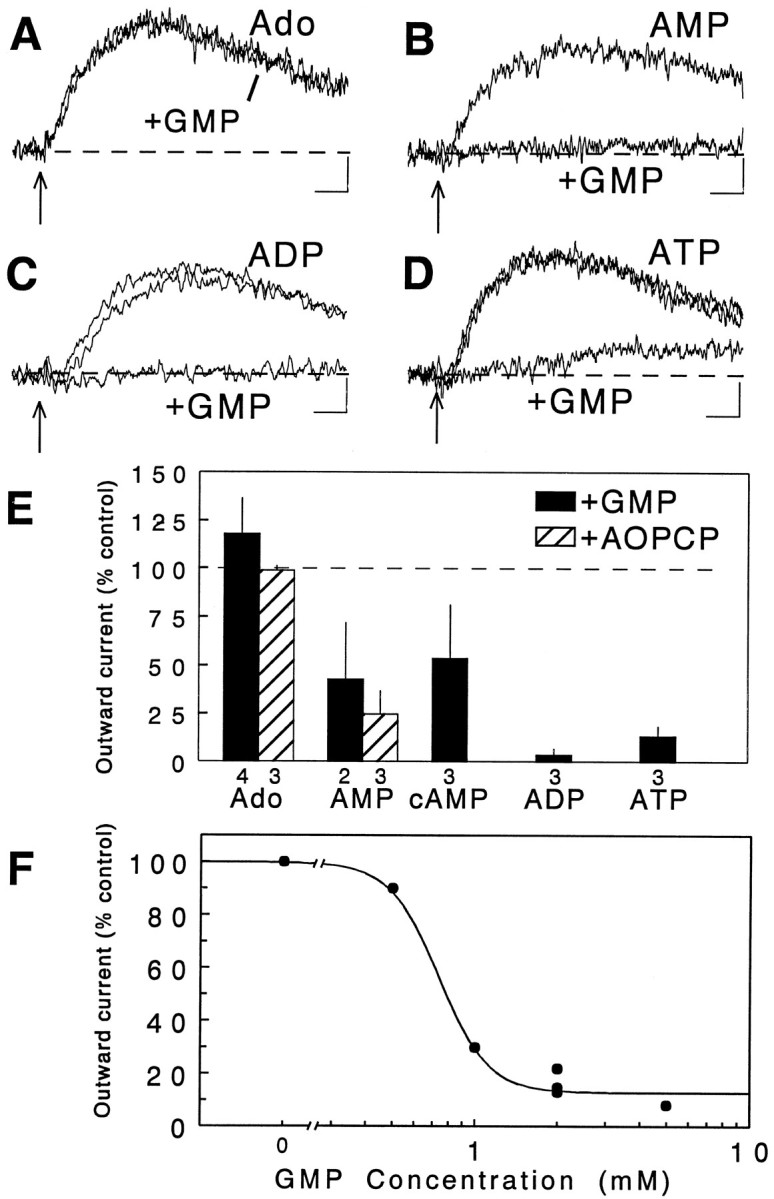Fig. 6.

GMP and AOPCP antagonize responses to nucleotides but not adenosine. Responses to local application of adenosine (A) (200 μm) were completely insensitive to bath superfusion of the slice with 2 mmguanosine monophosphate (+GMP), which is an inhibitor of 5′-nucleotidase, the enzyme that converts AMP to adenosine. GMP concentrations up to 5 mm had no effect on the response to adenosine; however, responses to AMP (B), ADP (C), and ATP (D) (all at 200 μm) were blocked nearly completely by superfusion with 2 mm GMP. In C and D, separate averages of pre-GMP responses and responses obtained after GMP washout are illustrated and are virtually superimposable. InD, there was a small, very slow inward current response to ATP that persisted in 2 mm GMP, and this was abolished by increasing the GMP concentration to 5 mm (not shown). Calibration bars indicate 1 sec and 3 pA for each set of averages. Summary data for all slices tested with GMP are shown inE, as well as for slices tested with 250 μm AOPCP. The dose–response curve for bath-superfused GMP versus 200 μm ATP (local pressure ejection) is illustrated in F. Each point represents an individual slice tested with a single concentration of superfused GMP; the solid line represents the best fit to the points using the logistic equation, with an EC50 of 0.74 mm.
